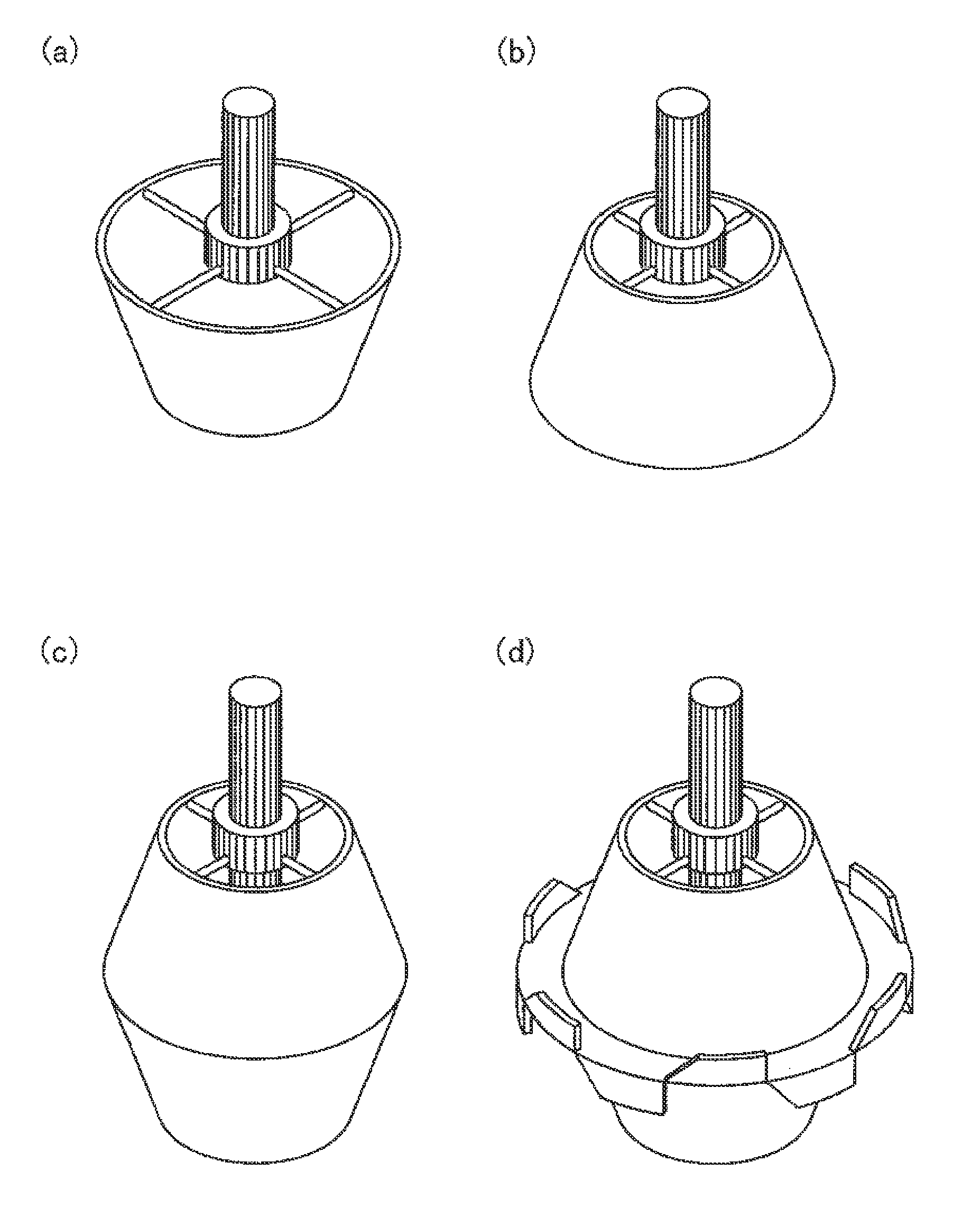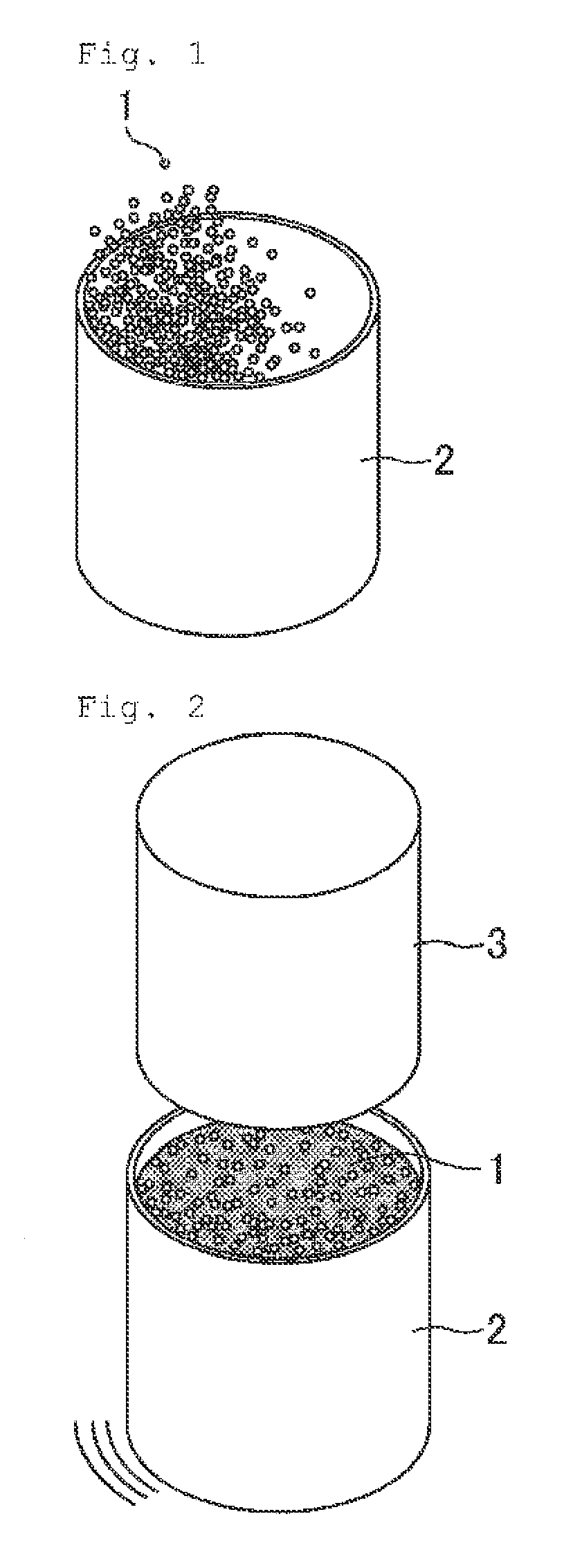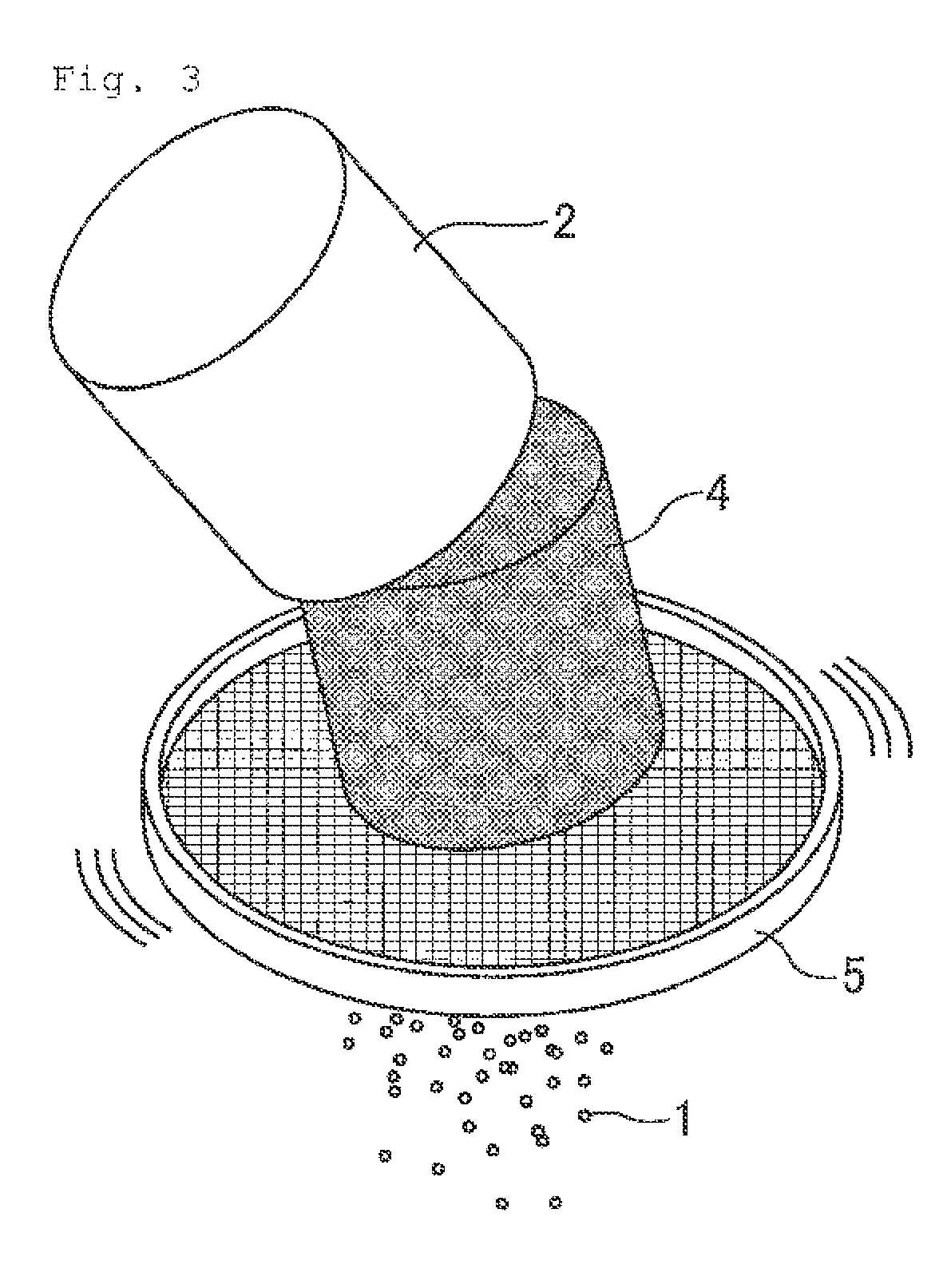Method for manufacturing fine polytetrafluoroethylene powder
a technology of polytetrafluoroethylene and fine powder, which is applied in the field of fine powder manufacturing of polytetrafluoroethylene, can solve the problems of reducing molding properties, affecting handling characteristics, and forming aggregates that may not restore themselves to their original secondary particle powders, etc., and achieves superior handling characteristics, large aggregate disintegration degree, and low compression ratio
- Summary
- Abstract
- Description
- Claims
- Application Information
AI Technical Summary
Benefits of technology
Problems solved by technology
Method used
Image
Examples
example 1
[0177]To the PTFE aqueous dispersion obtained in Polymerization Example 1 was added deionized water to adjust the specific gravity to 1.080 g / ml (25° C.). The adjusted PTFE aqueous dispersion (10.0 L) was placed in a 17-L stainless steel coagulation vessel equipped with a downward tapering cone-shaped impeller and a baffle plate, and the temperature of the liquid was controlled to 22° C. Immediately after the adjustment of temperature, 7.5 ml nitric acid (60%) was added and, at the same time, agitation at 600 rpm was initiated. After initiation of agitation, the aqueous dispersion underwent a change into a slurry and wet powder was formed. Agitation was then continued for 3 min.
[0178]The wet polymer powder was then filtered off and was charged into the coagulation vessel with 8.5 L deionized water. The temperature was adjusted to 25° C. and the polymer powder was washed twice at an agitation speed of 600 rpm. After washing, the wet polymer powder was filtered off, and left in a hot ...
example 2
Polymerization Example 2
[0181]A PTFE aqueous dispersion was obtained by the polymerization reaction according to Example 5 of WO 2007 / 119829.
[0182]The resulting PTFE aqueous dispersion had a solids content of 31.4% by mass, an average primary particle size of 0.35 μm, and a standard specific gravity (SSG) of 2.160.
example 3
Polymerization Example 3
[0185]To a 6-L stainless steel (SUS316) autoclave equipped with a stainless steel (SUS316) anchor-type impeller and a thermostat jacket were added 2960 g deionized water, 120 g paraffin wax, and 4.4 g ammonium perfluorooctanoate, and the autoclave was heated to 85° C. while removing oxygen from the system by purging three times with nitrogen gas and twice with TFE gas. The inner pressure was then brought to 0.70 MPa with TFE gas, and 0.26 g chlorotrifluoroethylene (CTFE) was added. The inner temperature was maintained at 85° C. with agitation at 280 rpm.
[0186]After the temperature in the polymerization vessel was stabilized, an aqueous solution of 12.3 mg ammonium persulfate in 20 g deionized water and an aqueous solution of 180 mg disuccinic acid peroxide in 20 g deionized water were pressed therein with TFE and the inner pressure of the autoclave was brought to 0.78 MPa. The reaction proceeded at an elevated rate, while the reaction temperature and agitatio...
PUM
| Property | Measurement | Unit |
|---|---|---|
| particle size | aaaaa | aaaaa |
| diameter | aaaaa | aaaaa |
| specific gravity | aaaaa | aaaaa |
Abstract
Description
Claims
Application Information
 Login to View More
Login to View More - R&D
- Intellectual Property
- Life Sciences
- Materials
- Tech Scout
- Unparalleled Data Quality
- Higher Quality Content
- 60% Fewer Hallucinations
Browse by: Latest US Patents, China's latest patents, Technical Efficacy Thesaurus, Application Domain, Technology Topic, Popular Technical Reports.
© 2025 PatSnap. All rights reserved.Legal|Privacy policy|Modern Slavery Act Transparency Statement|Sitemap|About US| Contact US: help@patsnap.com



